Falconry Family
May – June 2013
The Moglichs have specialized in avian artistry for three generations.
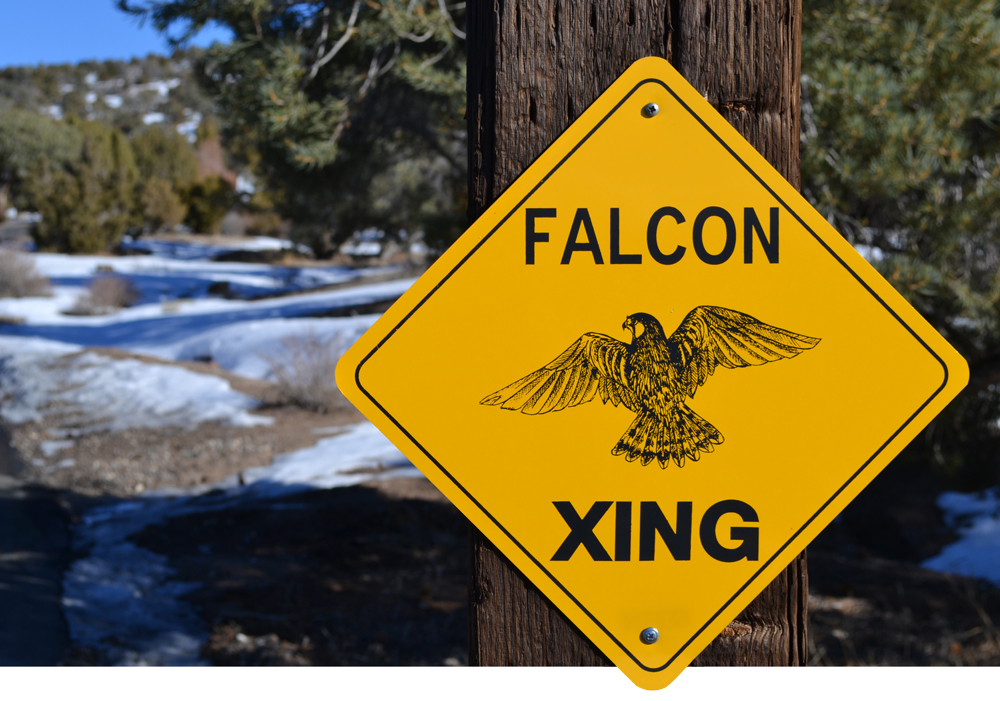 STORY & PHOTOS BY ERIC CACHINERO
STORY & PHOTOS BY ERIC CACHINERO
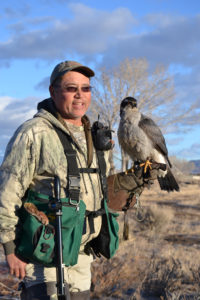
As the early morning sun paints its colors across the Carson Range, the piercing scream of a hawk slices through the serenity. We slide stealthily past rabbitbrush and sage toward the sound of mallard ducks over the next bank. Our hearts race in anticipation of the moment the hawk will make its majestic flight.
The bird sits perched on Ryan Moglich’s glove, digging in its sharp talons as it waits to make a move for its prey. The silence breaks as we rush over the bank, only to be greeted by the sound of mallards flapping and quacking as they make their getaway—and it’s on to the next gully.
It’s the last weekend of duck season, and Mark Moglich and his son, Ryan, have invited me to spend it with them enjoying their art and passion—falconry. The Moglich family has been breeding, raising, training, and selling falcons and hawks across the globe for three generations, and their dedication shows in the extraordinary animals they raise. Housing about 80 falcons and hawks at their Gardnerville facility, they spend countless hours with these beautiful birds of prey.
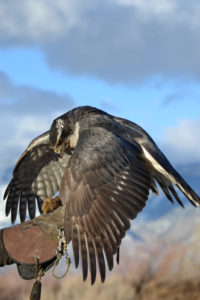
Falconry Evolves
Narrowly defined, falconry is the sport of using trained birds of prey to hunt wild game. However, the sport encompasses much more. Falconry requires a strong commitment to raising and training the birds and ensuring they have adequate shelter, hunting opportunities, and veterinary care. Although the word “falconer” is traditionally used to describe someone who flies a falcon, and the word “austringer” is used to describe someone who flies a hawk, falconer is now the common application.
A tradition steeped in history, falconry has been practiced for millennia. Although its exact beginning is debated, it is widely believed to have originated in ancient Mongolian and Chinese tribes of Eastern Asia. Falconry eventually made its way into early European society, where it evolved into an indicator of one’s place in the social hierarchy. “When you look at early European society, birds determined status,” Ryan says. “The gyrfalcon was the bird designated for kings, the peregrine for earls, and the goshawk for yeomen.”
Falconry for recreational hunting is still practiced today in many countries and is an increasingly popular means of hunting in Nevada. According to Ryan, the Mongolians still practice falconry in its traditional form, hunting with golden eagles from horseback.
“When I was 12 years old my father came home with a redtailed hawk,” Mark says. “From that day on, I was infatuated with
the sport.” Mark learned the sport quickly, built his collection of birds, obtained the proper state and federal licensing, and grew his knowledge until he was able to begin raising and training birds on a larger scale. Mark introduced Ryan to falconry at an early age, and Ryan’s love of the sport grew to match his father’s. Today, the two work together to maintain a professional breeding and training environment for their birds.
All in the Family
The Moglich family raises a number of different types of hawks and falcons, taking particular pride in their snow-white arctic gyrfalcons (pronounced “jer-falcon”). Along with the northern goshawk (“goss-hawk”), the gyrfalcon is Mark’s most prized bird and the most popular among buyers. “Nobody had gyrfalcons 20 years ago,” Mark says. “It was like the Ferrari you could never have, and now we’re breeding them.” Mark and Ryan also raise peregrine falcons, which can reach speeds of more than 200 mph while diving for prey, making them the fastest members of the animal kingdom.
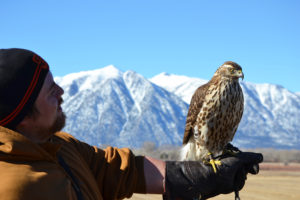
Training the birds requires patience, devotion, and a keen understanding of how falcons behave. There are two different methods to acquiring a bird to train, each having benefits over the other. The first is to raise the bird from birth. This method provides falconers with birds imprinted to their trainer, making them tamer than wild birds. The second method involves trapping a wild bird and taming it. While this method provides the falconer with a bird that already has hunting experience, trapped birds are much more wild and therefore harder to train.
While training, Mark and Ryan use a method of meticulous weight monitoring to ensure that the birds hunt properly. Mark explains that the birds must be hungry enough to return to the trainer for food, and they must also be hungry enough to want to hunt. “You have to weigh them daily because if they’re too heavy, they won’t come back to you,” Mark says.
Hawks and falcons that are bred specifically as hunting birds need to have their confidence built up—much like a well-trained house pet—in order to perform optimally. Once mature and properly trained, the birds are sold to licensed falconers all over the world.
In Nevada, large falcons such as the gyrfalcon and the goshawk—which can weigh anywhere from 1.8 to 4.6 pounds—are capable of hunting ducks, grouse, pheasants, and rabbits. Smaller hawks such as the American kestrel—which is used as an introductory falconry bird—only weighs about four ounces and is capable of hunting much smaller, non-game animals such as grasshoppers, mice, and small birds.
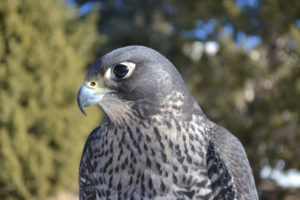
The Hunt
Hunting with the birds can be especially challenging considering the skittish nature of their prey—especially ducks. While attempting to hunt late-season ducks, Ryan and his goshawk, Aspen, set off into the fields near Gardnerville, scanning the irrigation ditches for signs of game.
Armed with a periscope that allows him to spot ducks without prematurely spooking them, Ryan makes his way quietly along the banks of the ditches, listening closely for the sound of waterfowl. Ryan slowly approaches with Aspen at the ready and attempts to spook the ducks into flying. The key is to get close enough to the ducks before spooking them, so the falcon is able to take off after them while they’re in mid-flight.
Because of the unique nature of the sport, specialized equipment is needed. While being carried through areas where there is no game, or while being transported in a special cage built in Ryan’s truck bed, Aspen dons a small helmet called a hood to keep her calm and minimize distractions.
While hunting, Ryan must wear a thick leather glove that covers his hand and forearm to protect him from the falcon’s sharp talons. To ensure that his falcon does not fly away, Ryan attaches two leather anklets connected with a piece of rope or leather called “Jesses,” which acts as a tether and gives Ryan control while Aspen is not in the air.
Referred to as “the real sport of kings,” falconry provides serious and dedicated falconers with the ultimate connection between man and nature, working together toward a common goal and
building a strong mutual relationship. The special bond between falcon and falconer is not something that can be easily broken. A family tradition that has spanned nearly three lifetimes, falconry continues to hold a special place in the hearts of the Moglich family.

